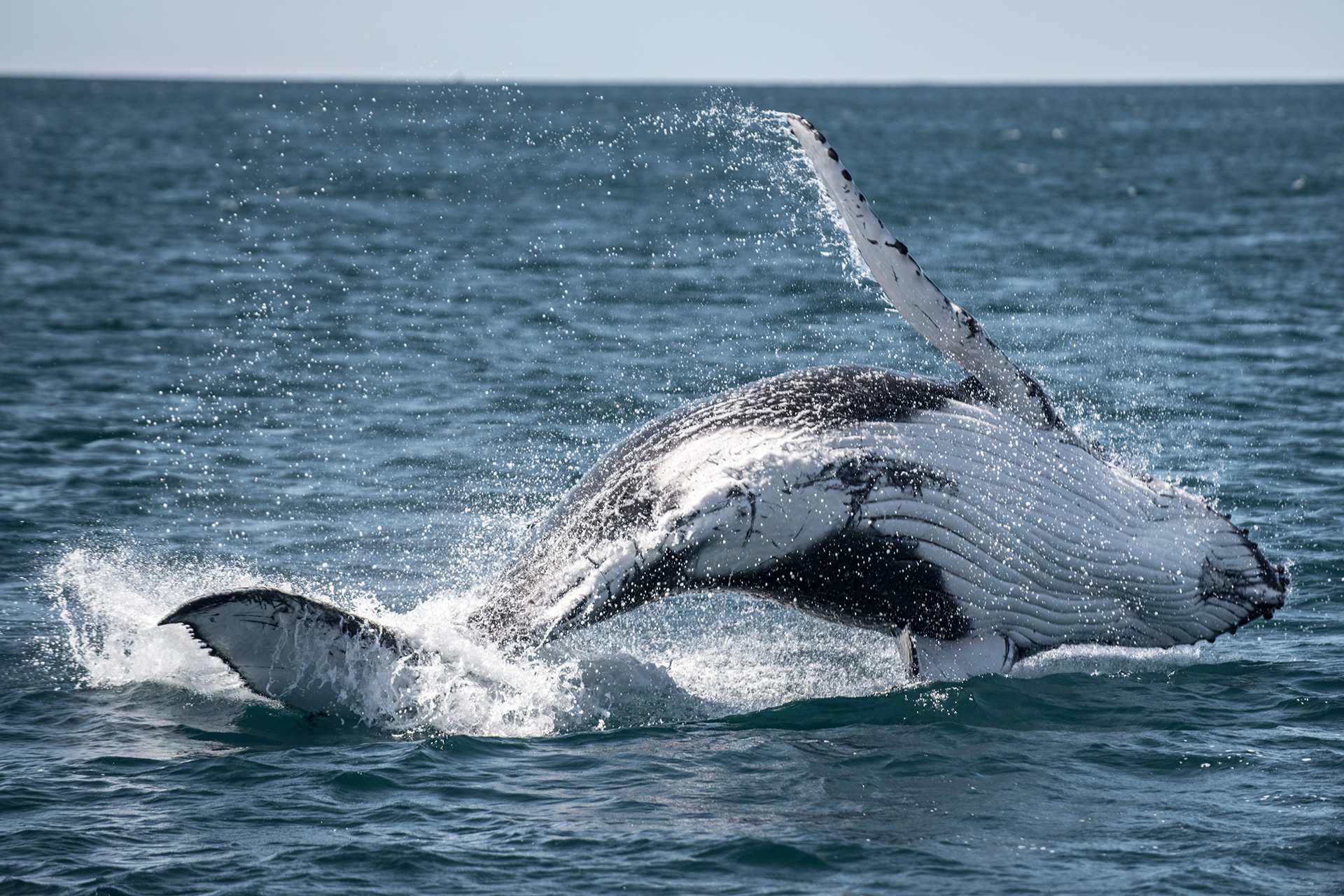
Things you need to know about swimming with humpback whales in Ningaloo
by
Cover photo: Humpback whale breaching out of water.
People come to Western Australia from all over the world to swim with the biggest fish in the ocean. But it is not just whale sharks attracting visitors to Exmouth and Coral Bay. The arrival of migrating humpback whales between June and October is another unforgettable experience you can have here in Ningaloo.
Humpback whales roam every ocean in the world. Western Australia is a hot spot for whale watching, with around 40,000 whales migrating along our coastline every year. Like swimming with whale sharks, there are only a handful of places in the world where you can get in the water and swim with humpback whales. Exmouth and Coral Bay are the only two places in WA where you can enjoy an in-water interactive experience with these playful, gentle ocean giants. What a privilege it is to have these amazing mammals grace our waters.
If swimming with humpback whales is something you’ve always wanted to do, our latest blog will tell you everything you need to know about this life-changing experience.
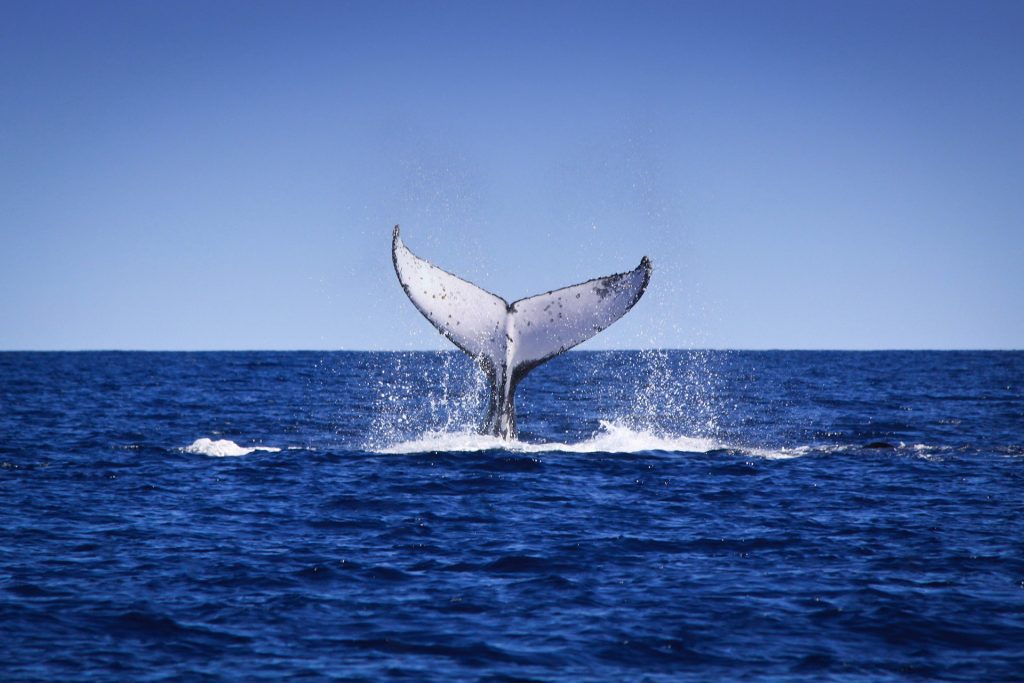
When and where can I see humpback whales in Ningaloo?
Winter in Western Australia brings the chance to see humpback whales in their natural habitat. Whale watching tours depart from various locations along Australia’s Coral Coast. Between June to October, the whales migrate north from the Antarctic to the Kimberley Coast. They use the waters of Ningaloo as a resting area during their long haul 11,000 km migration.
From August, whale watching tours begin operating in Exmouth until October. Humpback whale season starts a month earlier in Coral Bay.
To get a good view of whales breaching the water during humpback whale season, some of the best vantage points in the area include Sunrise Beach, Bundegi Beach and Town Beach. If you keep your eyes peeled toward the ocean, you might spot them leaping from the water or performing mid-air rolls. It’s a magnificent sight to see.
It’s a dream of mine to swim with humpback whales. Will I be able to do this when I visit Exmouth?
Oh yes! Several tour operators have licenses to offer humpback whale swimming tours in the Ningaloo World Heritage Area. If the reason for your visit is primarily to see and swim with the whales, time your visit right. Humpback whale season is typically between July to October. So, if you’re in Exmouth during these months, it is possible to make your dream come true.
Humpback whale swimming tours are a once-in-a-lifetime opportunity to experience a genuine real-life encounter with these magnificent creatures in the wild. Full-day swim with humpback whale tours involve small groups – usually of around seven people – to maximise what will be an exhilarating experience. Being so close to them in their natural habitat and the memories of your in-water interaction will stay with you forever.
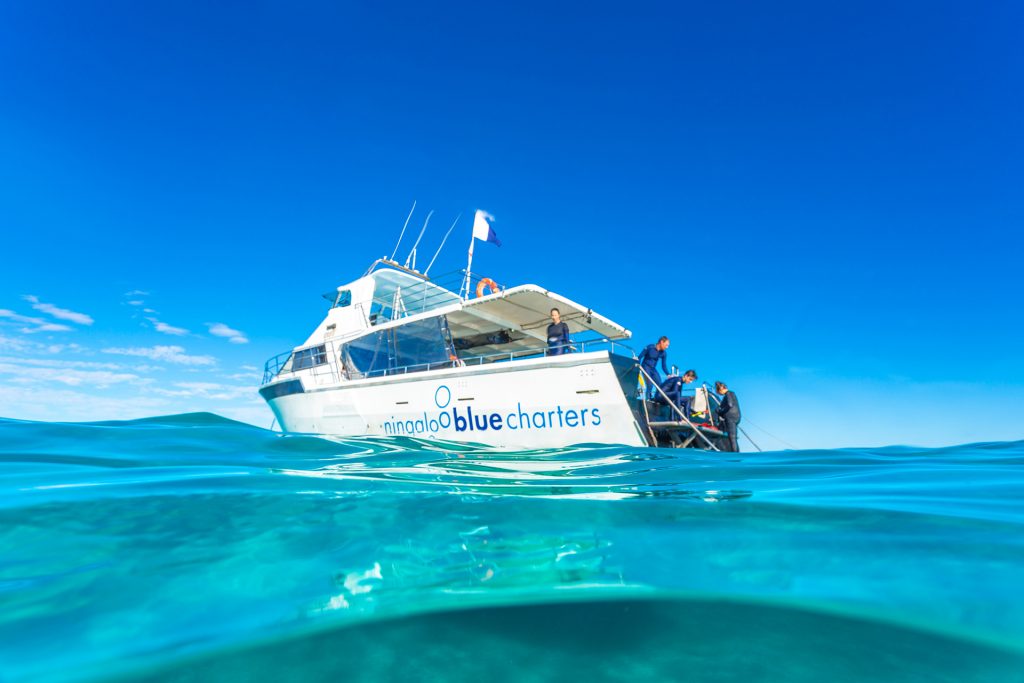
I’m so excited. It is safe to swim with humpback whales, right?
Yes, it’s safe. Despite being about the size of a school bus, humpback whales are gentle, playful creatures. But remember to be respectful towards them because, like all wild animals, they can be unpredictable. So always follow the rules set out by your tour operator. Your tour guide will brief you about the “do’s and don’ts” before you get into the water. Please pay close attention and enjoy the privilege of observing humpback whales in their natural environment.
Which local tourism companies offer humpback whale tours?
Several local tour operators are licensed to provide humpback whale snorkelling tours in Exmouth and Coral Bay. Always do your research before booking a tour. Only book tours with operators licensed to deliver humpback whale swim tours. Here in Western Australia, reputable tour operators have permission to run humpback whale experiences by the Department of Parks and Wildlife. Ningaloo Discovery Whale Shark Swim & Eco Tours and Kings Ningaloo Reef Tours come highly recommended. Both companies have experience operating humpback whale tours.
Other tourism companies operating in the Exmouth and Coral Bay region include Exmouth Dive and Whalesharks Ningaloo, Ningaloo Blue Dive, Coral Bay Eco Tours, and Ocean Eco Adventures. Whichever tour operator you decide to go with, choose one who has a responsible approach to ethical tourism.
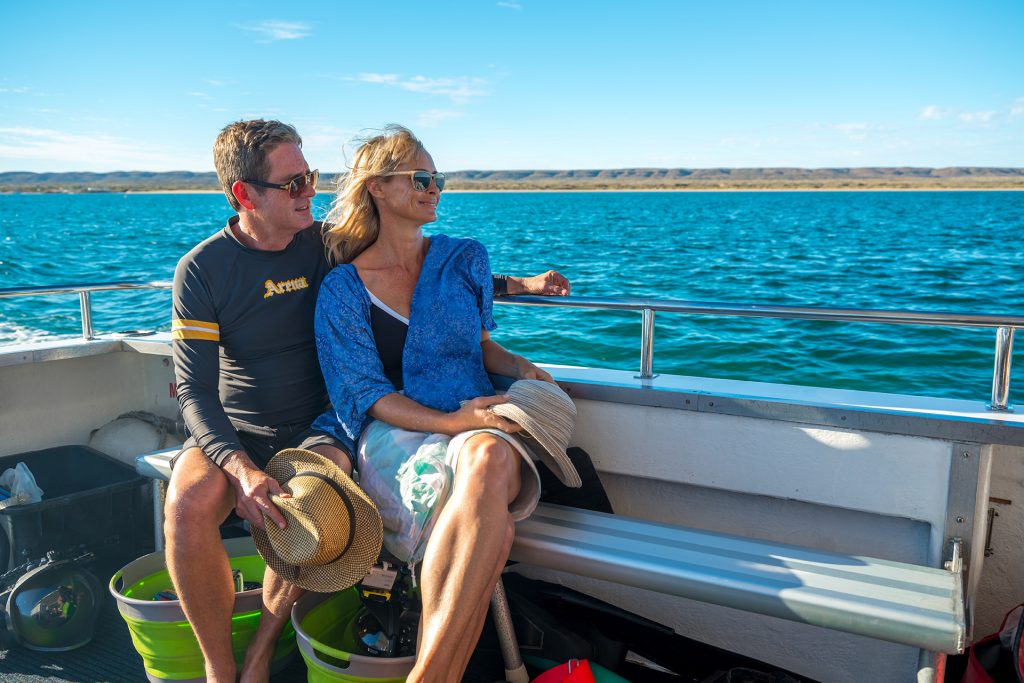
I’ve booked to swim with humpback whales. Are there any do’s and don’ts I need to be aware of before I go?
Please remember that these are wild creatures, and you must follow the guidelines set out by your tour operator. These guidelines are for your well-being and safety and that of the humpback whales. Tours operate on the whale’s terms, and in-water interactions with them will only happen if the whale’s behaviour allows. Your tour operator will be skilled at reading and interpreting their behaviour to ensure the experience goes smoothly. A specially trained crew will be on hand to ensure you don’t get too close to the whales. Operators are only permitted to approach whales up to 50 metres. Maintaining a safe distance between swimmers and whales is their number one priority. Like all wildlife, whales can be unpredictable, so any disturbance must be minimal.
Is there a minimum age to swim with humpback whales?
Humpback whale tours are accessible by people of every age and ability. But you will need to check age restrictions with your tour operator. Exmouth Dive and Whale Sharks Ningaloo specify that their humpback whale swim tours are only available to people thirteen years of age and over. To swim with humpback whales, participants must also be physically fit and confident in the water. Competent swimming and snorkelling abilities are essential. You will need to be able to snorkel and swim 100 metres independently in the open water.
What do I need to bring with me when I book a whale watching and swimming tour?
You will need a towel, a hat, swimwear, and warm clothing to wear after you’ve been in the water. It’s also worth packing some sea sickness medication if you’re prone to seasickness. If in doubt, check with your tour operator.
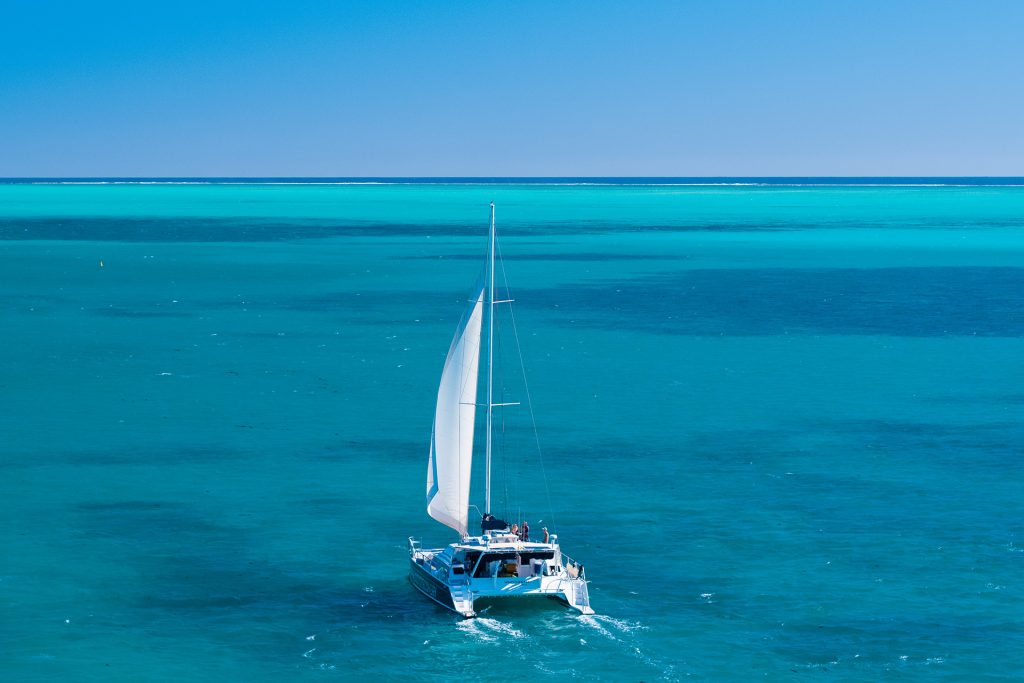
Where else in the world can I swim with humpback whales?
We’re biased. The best place to swim with humpback whales is right here in Western Australia. However, there are a few other destinations where you can enjoy this unforgettable experience. The Dominican Republic, The Kingdom of Tonga, and French Polynesia also offer opportunities to see and swim with humpback whales. You can also swim with humpback whales in Queensland, Australia.
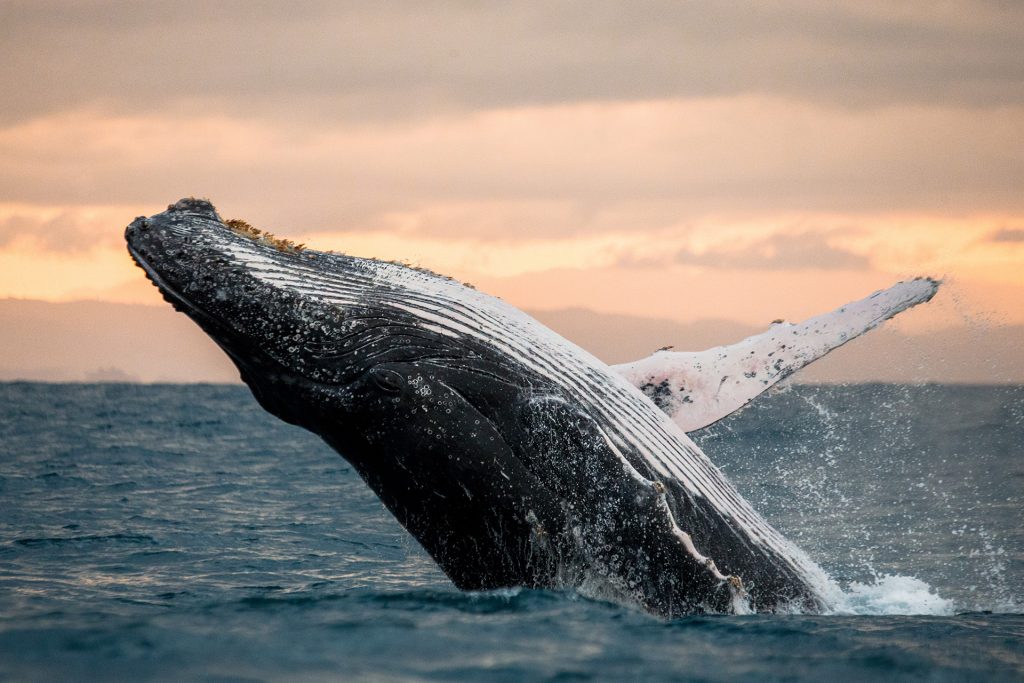
A few facts about humpback whales
- Adult humpback whales can weigh up to 40 tonnes and grow up to 19 metres in length. Female whales are bigger than males.
- Humpback whales get their name from the large hump that forms when their back arches as they dive into the ocean. They don’t have a hump.
- They are impressive acrobats. They love to show off by launching their entire body out of the water, which is called breaching.
- Humpback whales have baleen plates rather than teeth.
- They like to eat plankton, krill, and small fish.
- Despite their enormous size, humpback whales are not the biggest whales in the ocean. Blue whales are bigger.
- Humpback whales are mainly grey or black on their upper dorsal side. They have white undersides to their bellies and flippers. They have creases, known as ventral pleats, which run vertically from their lower jaw to their stomach.
- The colour and shape of the dorsal fin on the back of a humpback whale is unique to each whale.
If a humpback whale swim and observation tour isn’t already on your bucket list, we hope it will be now! Whether you want to experience the adrenaline rush of a humpback whale swim or prefer to watch them from the comfort of the boat, this once-in-a-lifetime opportunity is waiting for you right here in Exmouth and Ningaloo. We guarantee you’ll have a whale of a time, pun intended!
Find out more about the other amazing adventures awaiting you in Exmouth, by reading our suggestions of things to see and do in Exmouth and Ningaloo.
